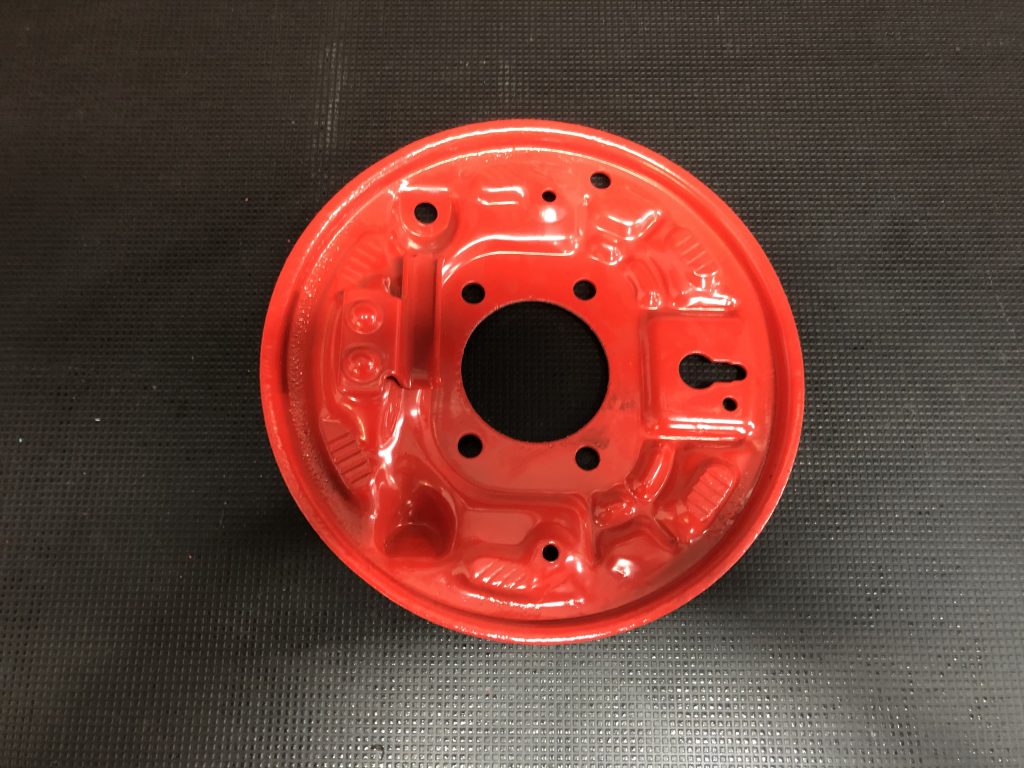Backing Plate & Slave Cylinder (Ass editing)
| Location | The front brake caliper carriers and discs are located on both sides of the front uprights/hubs of the car. |
| 2021 Regulations Reference | – 5.11 – 5.11.1 – 5.11.1.1 – 5.11.1.2 |
| Original Parts to Discard | – Brake Discs (optional) – Fasteners (optional) – Caliper Carriers (optional) |
| Parts to Add | – Brake Discs (optional) – Fasteners (optional) – Caliper Carriers (optional) – Paint/Powder Coating (optional) |
| Important Checks | It is recommended to replace worn or damaged braking parts in order to make the car safe and as reliable as possible. |
Requirements
The front brakes need to be disassembled and rebuilt to carry out cleaning, essential maintenance and to upgrade parts as per the regulations set by the BRSCC. The minimum requirement is to upgrade the flexi-hoses, but we recommend further intervention as discussed in this topic.
Except as stated in regulation 5.11.1, the complete braking system in terms of its componentry and operation must remain as standard OEM. Brake discs, calipers, drums, shoes, cylinders, servo, fluid reservoir and cables in terms of their design, materials and fitment must all remain as standard/standard pattern/OEM. It is permitted to relocate brake lines to the inside of the vehicle, and it is a mandatory requirement to replace the standard rubber brake hoses with braided/reinforced items. The front brake pad brand and friction material are free.
Suggested Assembly Method (2 Steps)
Step 1. Once you have successfully replaced (optional) the brake lines as discussed in the previous topic it is time to start reassembling the front braking system. First, you must ensure that the disc to hub mating surface is clean and ready for assembly. Now locate the disc to the hub and line up the Torx screw for fitment and tighten to the correct setting.
Torque Settings: Disc Torx Screw 9NM
Safety Tip – Before starting work on the braking system (or at any point when working under the vehicle or within the engine bay) ensure the car is at a workable height, secure to work on and that all parts are cool. It is important to also ensure you are wearing suitable protective hand and eyewear as debris often falls from the underside of the car when replacing or maintaining braking components related systems. In addition, brake fluid is both corrosive and poisonous, and although inflammable should be handled with the same respect and care as any other fluid within the car. Take care when also handling braking components such as pads and shoes as the brake dust although asbestos-free still poses a health risk.
Tool Tip – If the brake disc turns when you are trying to tighten the disc retaining screw fit two wheel bolts and use a pry bar to stop the dis rotating whilst you tighten the Torx screw.
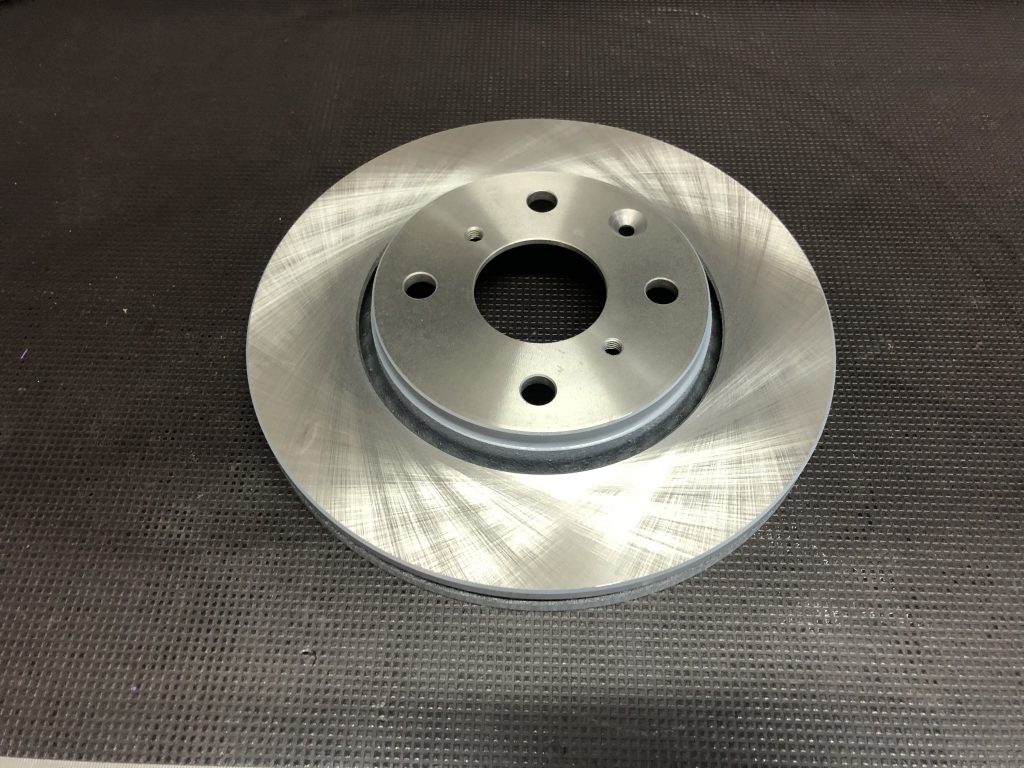
1. New Brake Disc 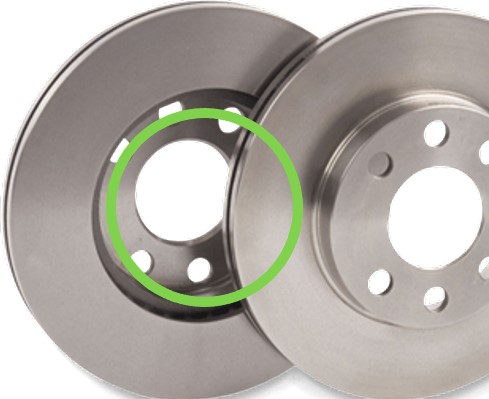
2. Brake Disc Surface (Clean) 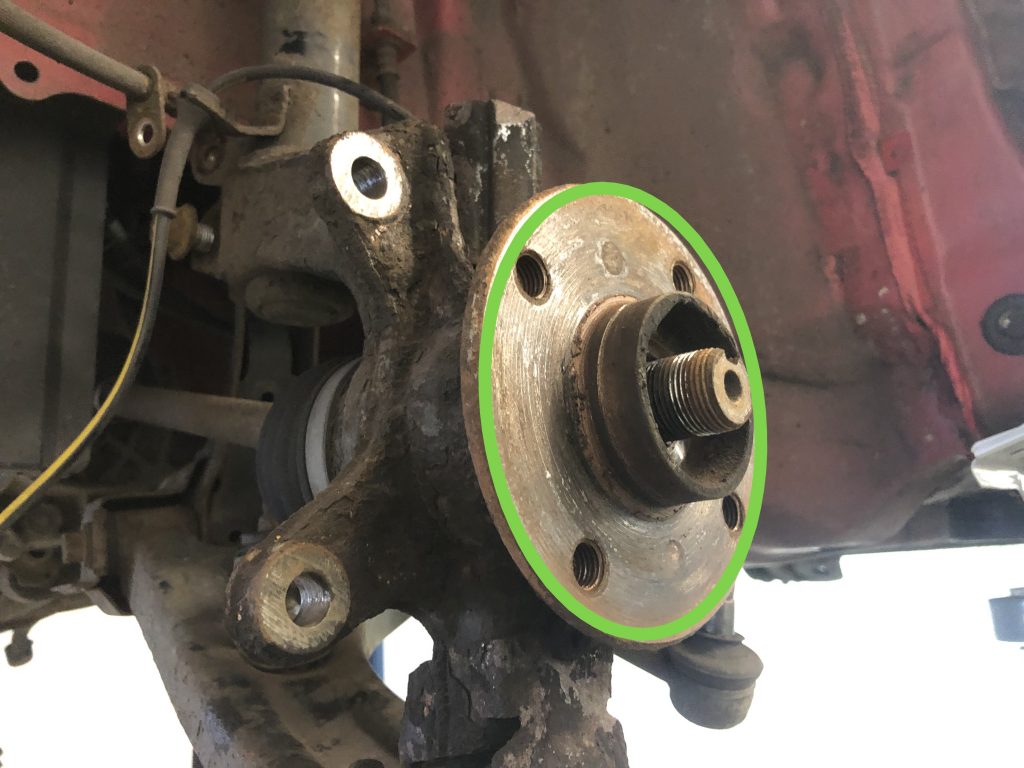
3. Wheel Hub Surface (Clean) 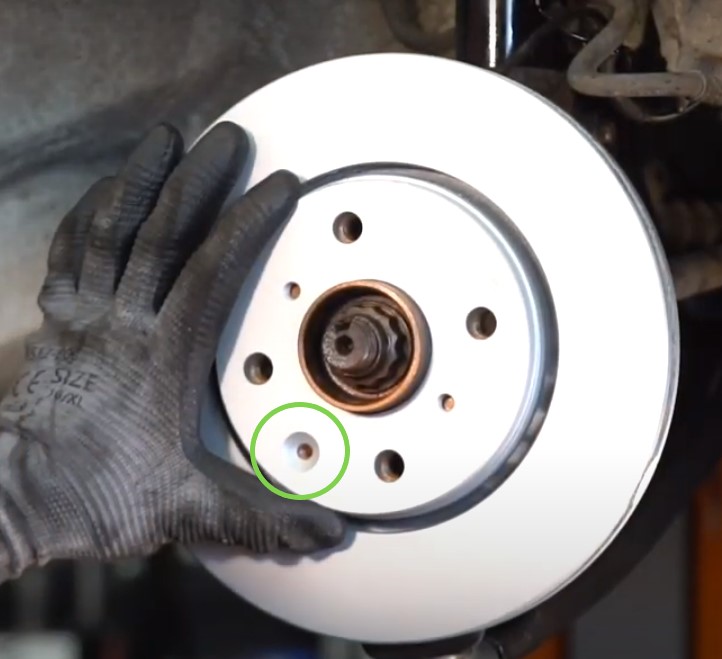
4. Align Torx Screw Location 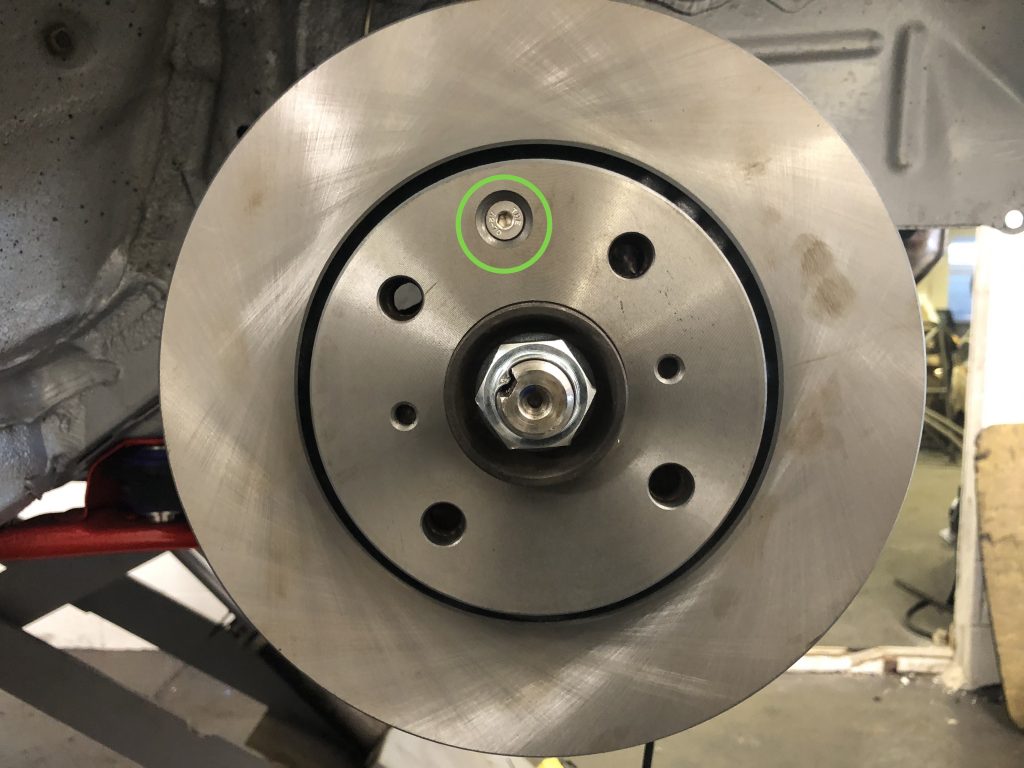
5. Fit Torx Screw (Disc fitted) 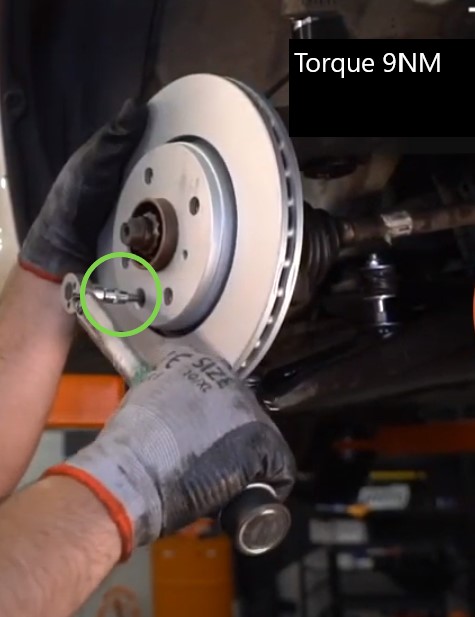
6. Torx Screw Tension
Step 2. Now fit the brake caliper carrier to the back of the wheel hub by sliding it over the disc. Tighten the two retaining bolts to the correct setting. In the example below, and on the car we built we chose to powder coat our caliper carriers. Before refitting, we had to clean the threads inside the carrier mount with a thread tap as illustrated below.
Torque Settings: Caliper Carrier Mounting bolts 89NM
Tool Tip – If you have painted or powder coated any braking parts, ensure that the mating parts are clear from any paint or powder coat before refitting to ensure they are alighted correctly and to the correct tension.
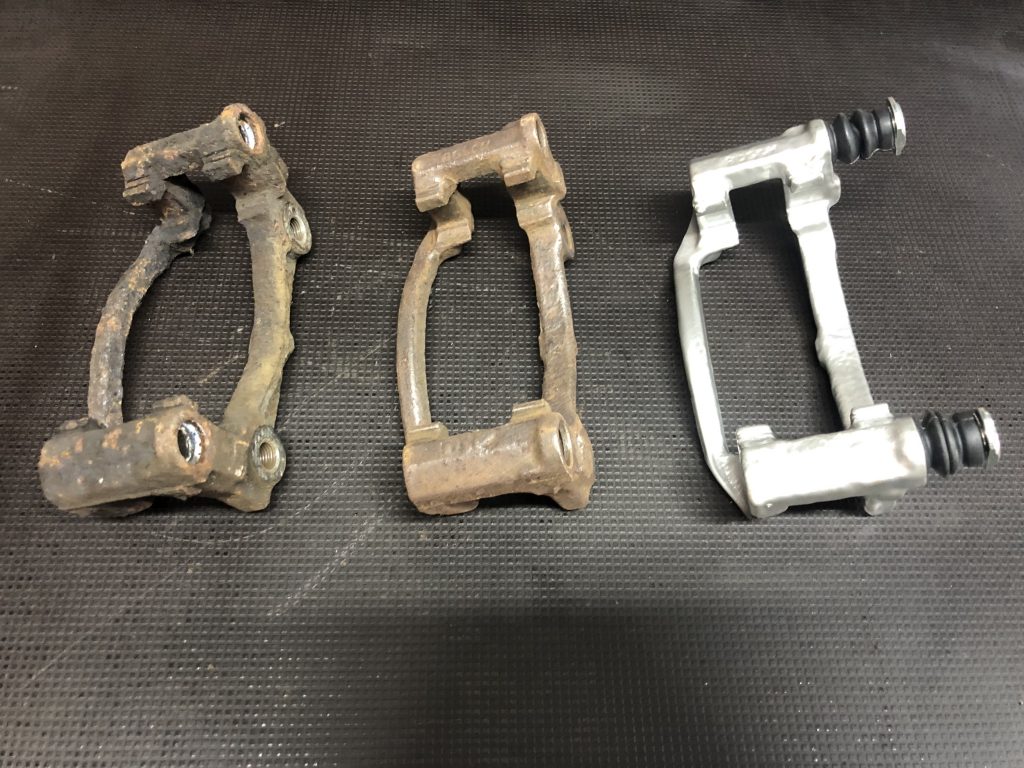
1. Caliper Carrier (Reconditioning) 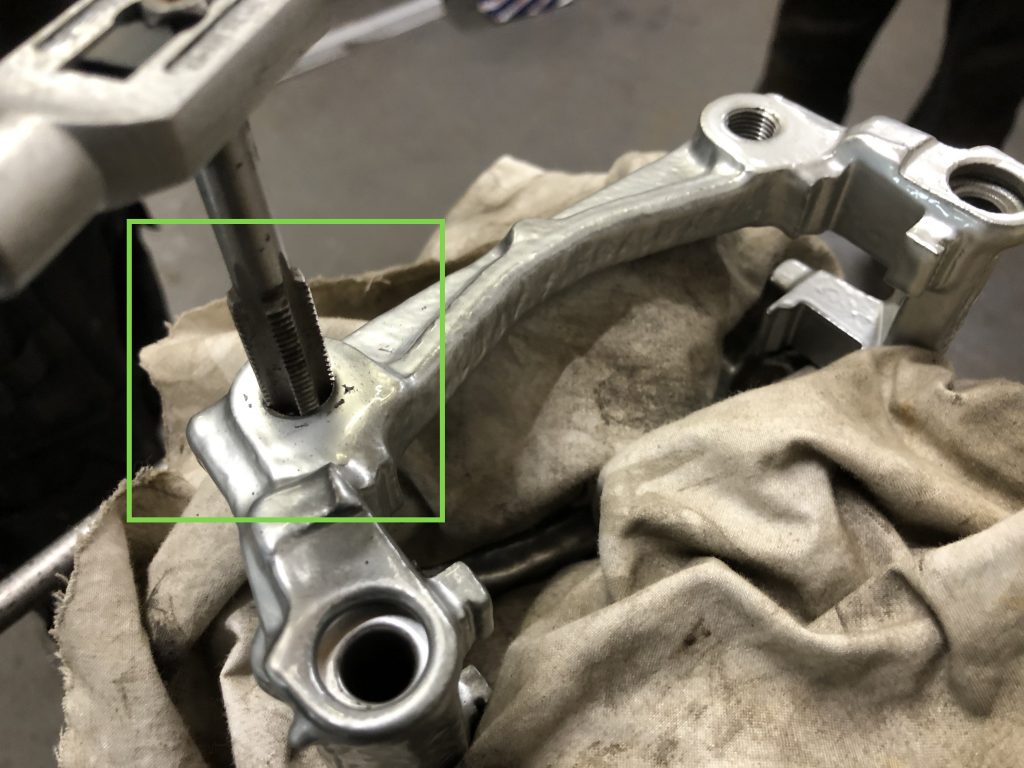
2. Caliper Thread Cleaning 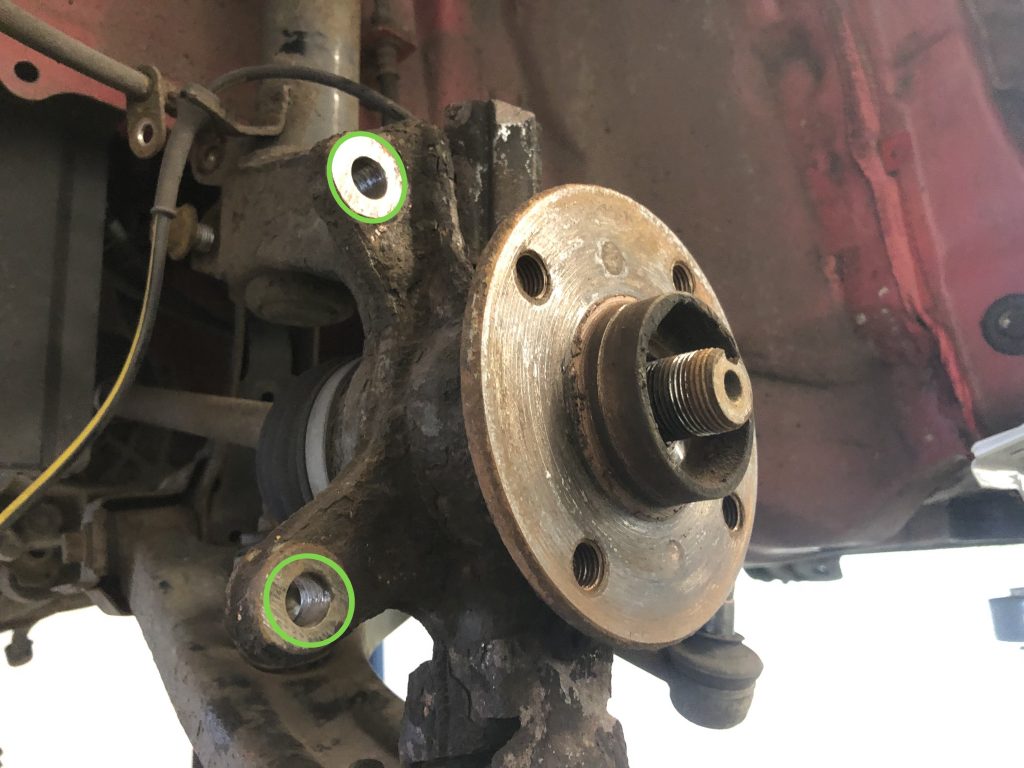
3. Caliper Carrier to Hub (Bolt mount location) 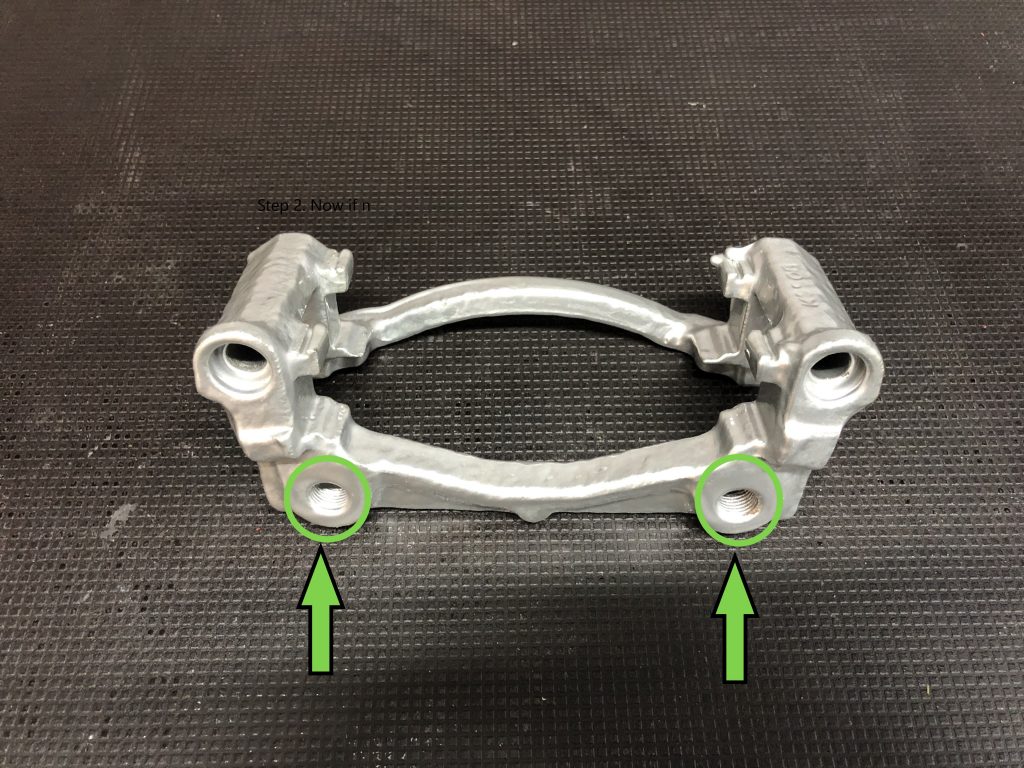
4. Caliper Carroier to Hub (Bolt location) 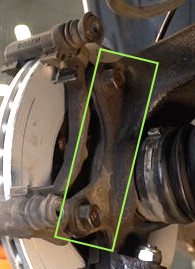
5. Caliper Carrier Mounted 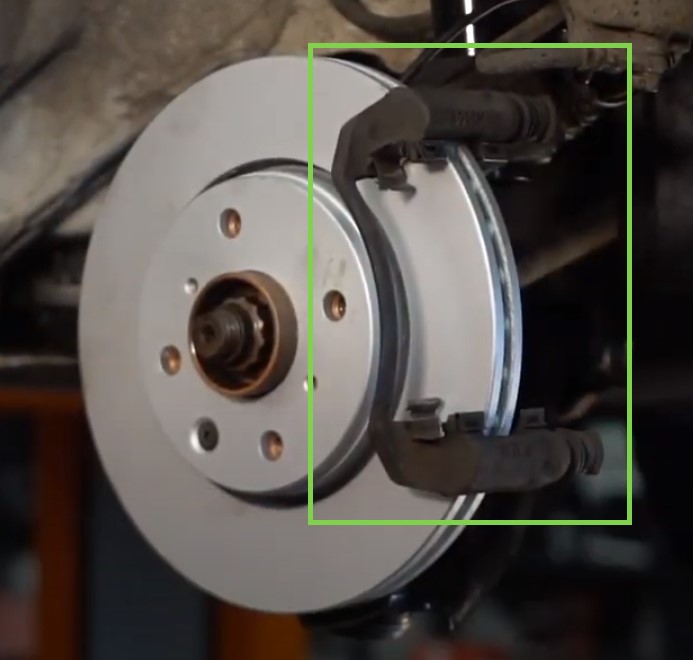
6. Caliper Carrier Orientation 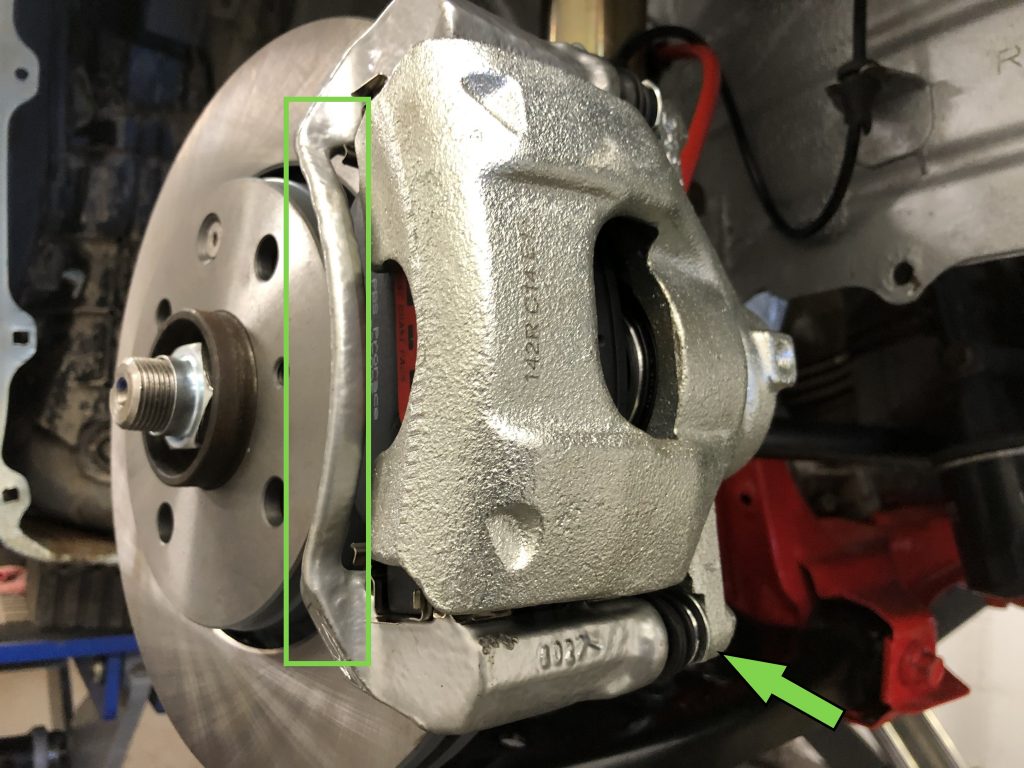
7. Caliper Carrier Orientation (With Caliper) 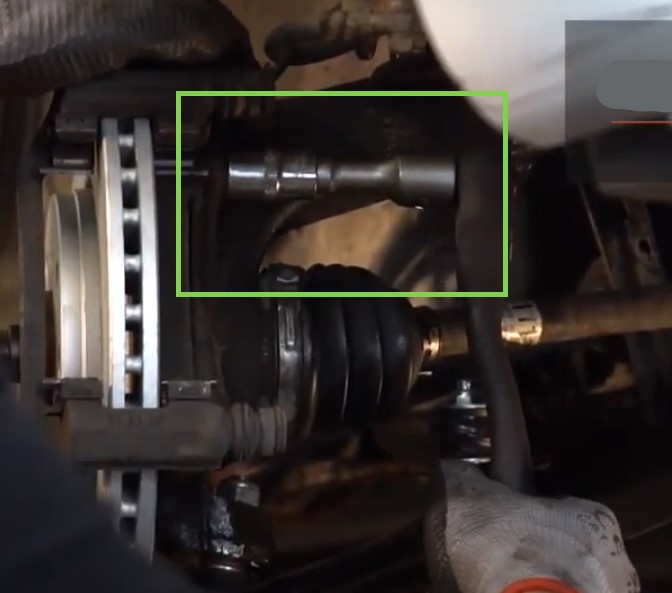
8. Tension Carrier Bolts 
9. Torque Carrier Bolts


